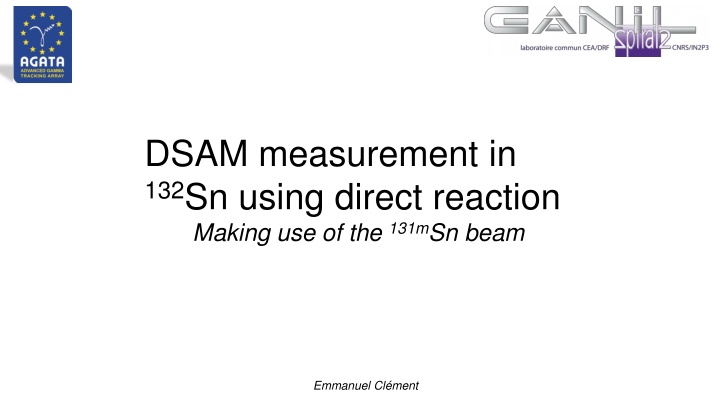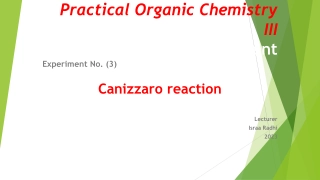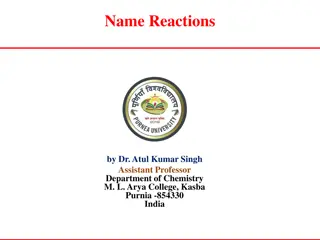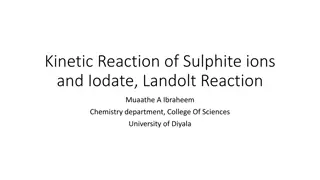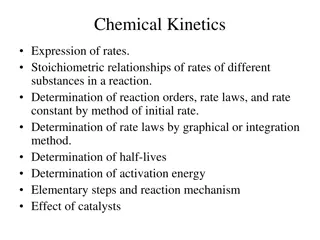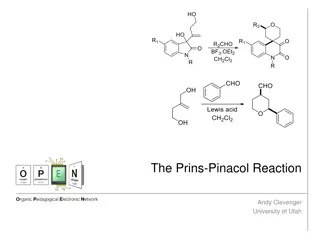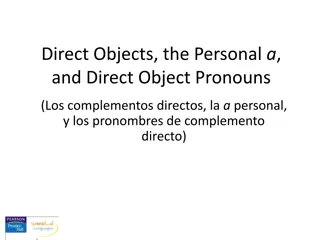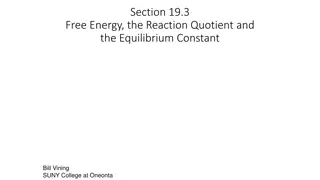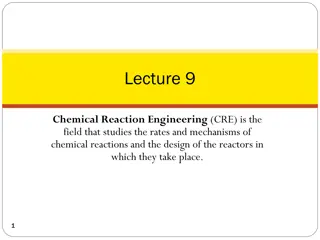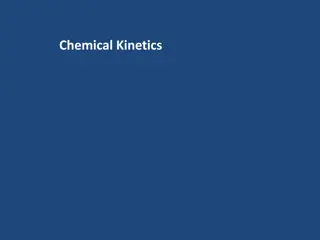DSAM Measurement in 132Sn with Direct Reaction
In this study, DSAM measurement in 132Sn was carried out using a direct reaction approach with a 131mSn beam. The nuclear structure of 132Sn was explored to search for non-yrast states and investigate lifetime properties. Octupole corrections in 131Sn were analyzed, along with the case of 207Pb with a neutron hole in 208Pb, showcasing the presence of octupole-phonon at high spin in 207Pb. The study provides valuable insights into the nuclear properties of these isotopes.
Download Presentation

Please find below an Image/Link to download the presentation.
The content on the website is provided AS IS for your information and personal use only. It may not be sold, licensed, or shared on other websites without obtaining consent from the author.If you encounter any issues during the download, it is possible that the publisher has removed the file from their server.
You are allowed to download the files provided on this website for personal or commercial use, subject to the condition that they are used lawfully. All files are the property of their respective owners.
The content on the website is provided AS IS for your information and personal use only. It may not be sold, licensed, or shared on other websites without obtaining consent from the author.
E N D
Presentation Transcript
DSAM measurement in 132Sn using direct reaction Making use of the 131mSn beam Emmanuel Cl ment
T. Miyagi, S. R. Stroberg, P. Navrtil, K. Hebeler, and J. D. Holt Phys. Rev. C 105, 014302 (2022) Ab-initio calculation with 3-body-term 1.8/2.0 (EM) VS-IMSRG Octupole correction in 131Sn Nuclear structure of 132Sn : - search for non yrast states - lifetime u A. Gottardo courtesy
Octupole correction in 131Sn B(E3, 3- 0+) = 0.015(5)e b3 = ~15 W.u (15.103 e fm6) 3.105 pps @MINIBALL HIE-ISOLDE D. Rosiak et al Phys. Rev. Lett. 121, 252501 (2018)
Octupole correction in 131Sn Case of the 207Pb : 1 neutron hole in 208Pb The first excited states of 207Pb are part of the p-11/2 X 3-multiplet with slightly reduced B(E3) with respect to 208Pb due to the p1/2blocking effect The (i13/2)-1state band structure : strong coupling effect of the i13/2 and f7/2 : enhanced B(E3) with respect to 208Pb Evidence of octupole-phonon at high spin in 207Pb : Study of the octupole phonon in the 208Pb region. First evidence of octupole- phonons at high spin in 207Pb N=126 Z=82 N=82 Z=50 D. Ralet, E.C et al Phys.Lett. B 797, 134797 (2019),
Octupole correction in 131Sn B(E3, 3- 0+) = 0.015(5)e b3 = ~15 W.u (15.103 e fm6) 3.105 pps @MINIBALL HIE-ISOLDE h11/2-1 x 3- P. Bhattacharyya et al Phys Rev Lett 87, 062502 (2001) D. Rosiak et al Phys. Rev. Lett. 121, 252501 (2018)
Octupole correction in 131Sn B(E3, 3- 0+) = 0.015(5)e b3 = ~15 W.u (15.103 e fm6) Safe Coulomb excitation of an isomeric 131Sn beam >106pps @~5.5 MeV/u h11/2-1 x 3- h11/2-1 x 0+ P. Bhattacharyya et al Phys Rev Lett 87, 062502 (2001)
131mSn Isomeric beam h11/2-1 x 3- (d5/2) -1 Safe Coulomb excitation of an isomeric 131Sn beam > 106pps @~5.5 MeV/u (s1/2) -1 h11/2-1 x 0+ d3/2-1 K. L. Jones et al Phys. Rev. C 105, 024602 (2022)
131mSn Isomeric beam - - - - - What is the isomeric ratio in the present SPES case ? Quantifying ? T1/2= 56 s. and 58 s. respectively No measurement at ISOLDE and TRIUMF n-rich beam at ORNL and ISOLDE are extracted as SnS+ Laser ionization for isomer enhancement ? h11/2-1 x 3- (d5/2) -1 (s1/2) -1 d3/2-1 E. Rapisarda et al Phy. Rev. C 84, 064323 (2011) K. L. Jones et al Phys. Rev. C 105, 024602 (2022)
131mSn Isomeric beam - - - - - What is the isomeric ratio in the present SPES case ? Quantifying ? T1/2= 56 s. and 58 s. respectively No measurement at ISOLDE and TRIUMF n-rich beam at ORNL and ISOLDE are extracted as SnS+ Laser ionization for isomer enhancement ? h11/2-1 x 3- (d5/2) -1 (s1/2) -1 d3/2-1 E. Rapisarda et al Phy. Rev. C 84, 064323 (2011) K. L. Jones et al Phys. Rev. C 105, 024602 (2022) - The (d,p) reaction will allow us to get the isomer energy - 241 keV according 131In decay but not secured P. Bhattacharyya et al Phys Rev Lett 87, 062502 (2001) - 100 keV according to shell model calculation R. Surman et al Phys. Rev. C 79, 045809 (2009)
(d,p) reaction 132Sn investigated from fission and -decay high spin states Search for non yrast positive parity states such as 2+2 or 3+ states Combined with DSAM/plunger measurement with direct feeding selection (by passing the isomers) Direct investigation of the structure of the 2+ state = ? = ? = 7 ps = 4 fs n-rich beam at ORNL and ISOLDE are extracted as SnS+ 0 detection ? 106pps for pure Z=50 is already very hard for (A,Z) but cannot be handle if highly contaminated by isobaric - -
Proposed program not a one-night-stand experiment This LoI aims at using the 131mSn isomeric beam Safe Coulomb excitation to determine the E2 matrix elements d3/2-1 (d5/2) -1 and (s1/2) -1 Safe Coulomb excitation to determine the E3 matrix element to be compared to the corresponding B(E3) in 132Sn 131mSn(d,p)132Sn reaction to determine the position of the h11/2-1 isomeric state knowing 132Sn (d,p) reaction to investigate the structure of the 2+ state (d,p) reaction to search for non yrast positive parity states such as 2+2 or 3+ states (d,p) reaction to Combined with DSAM/plunger measurement To be used to test coming ab-initio calculation in the 132Sn region
